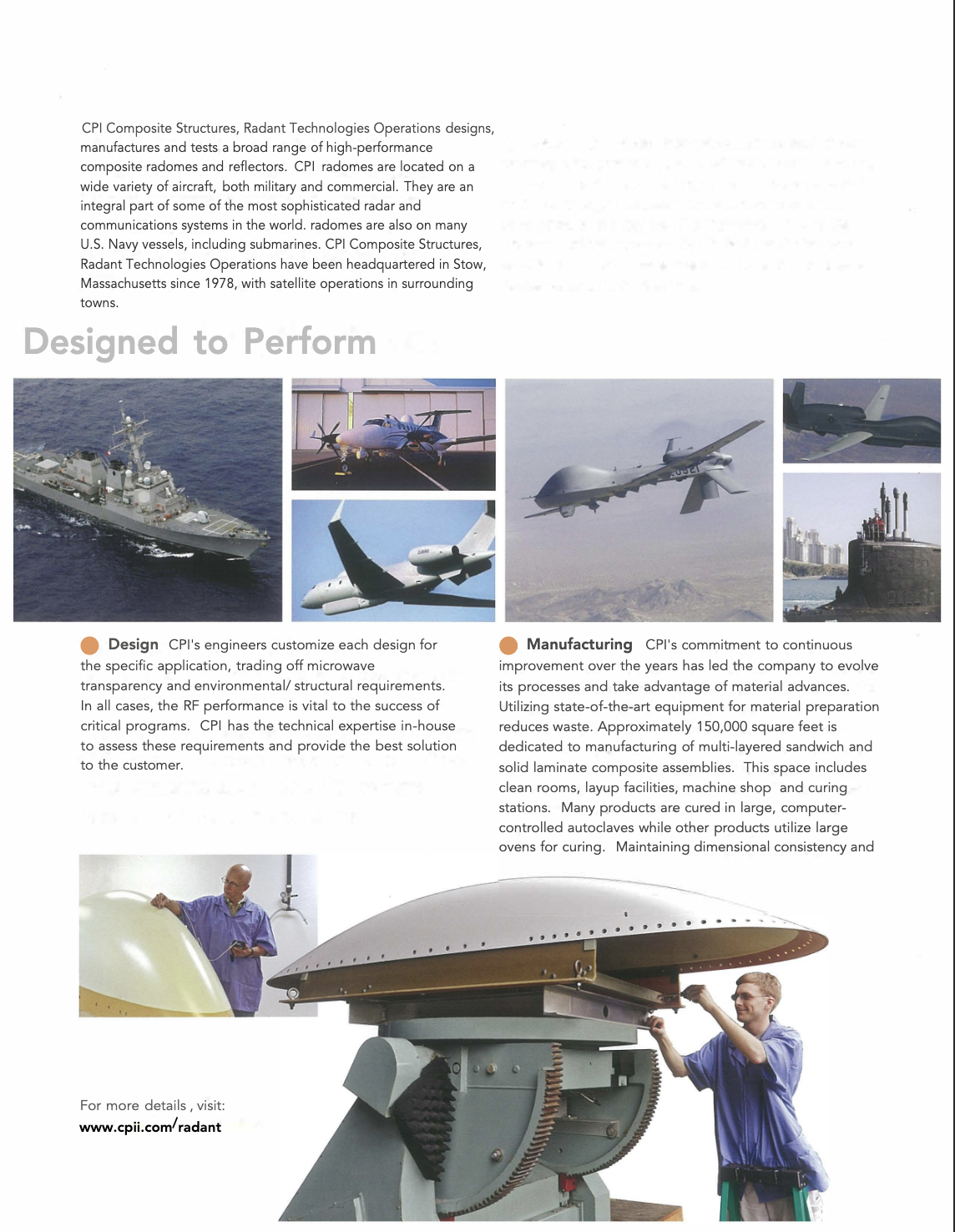Professional Summary
Hands-on Configuration Management, Product Lifecycle Management, and Document Control professional with expertise applying documentation and engineering change control management disciplines to products in the medical device, telecommunication, massively-parallel super-computing, computer network, optical network, network security, advanced composite, aerospace & defense (A&D), and ad tech industries. (Granted SECRET Clearance: currently inactive)
Expertise in electronic product data management/product lifecycle management (PDM/PLM) – Oracle/Agile & Arena Cloud PLM and other automated release tools/scripts, version control, bill-of-material (BoM) product structuring – (both hierarchical and modular - e.g., planning, pseudo, phantom/blow-through, and configure-to-order bills-of-materials) in MRPII/ERP environments, engineering change order (ECO) process execution, analysis, and database management, new product introductions (NPI), and sustaining engineering efforts.
Successful at documenting, releasing, and managing large, technically complex systems (hardware/software/firmware) in hi-volume R&D and production environments using a systems engineering approach.
Conversant with CM & Quality Standards/Guidelines:
AS9100/ISO9001 ♦ ANSI/EIA-649 ♦ ISO 10007 ♦ MIL-STD-973 ♦ MIL-HDBK-61B ♦ DoD Instruction 5000.97
Selected Accomplishments
- Partnered with senior leadership in designing and implementing Configuration Management strategies across numerous defense, aerospace, and commercial programs.
- Implemented leading PLM Solutions to promote/facilitate configuration management and change management processes and efficiencies across the organization and supply-chain.
- Led ERP system implementation data migration efforts and the import/design of structured bill-of-materials.
- Awarded Configuration Management Plan approvals on first-pass CDRL/SDRL submittals to prime defense contractors (Boeing, Raytheon, et. al.) and the NAVY.
- Singularly led, managed - and currently managing - the Configuration Management function across my last four organizations.
Professional Experience
Sr. Engineering Configuration Manager/Arena PLM System Administrator
OUTFRONT Media, Inc., Andover, MA | 2018 - Present
Establishes, administers, and maintains a configuration management system (Arena Solutions Cloud PLM) compliant with regulatory, quality, corporate, and customer requirements (both internal and external).
Responsible for the creation and management of all hardware configuration projects and planning – Parts, BoMs, AML/AVL including Change Control (ECRs, ECOs, & Deviations).
Regulates the change process so that only approved and validated changes are incorporated into product baselines (hardware/software/firmware).
Designs, maintains, and monitors Arena/PLM→ERP integration triggers for ERP system reconciliation.
Key Achievements
- Implemented Arena Solutions PLM (within a 6-month go-live window) to support a 15-year/$1bn contract with NYC MTA and the installation of 50,000 Liveboards (digital advertising/smart media technology displays) across all major markets
- Tasked with and authored an ERP selection brief which looked at four potential ERP Cloud & On-Premise solutions to integrate with Arena PLM. My recommendation – Rootstock Cloud ERP built on the Salesforce Platform – was accepted
- ERP Implementation & PLM→ERP Integration Team Member – acting as Configuration Management SME
OUTFRONT Media Inc. (NYSE: OUT) is a prominent out-of-home media company in North America, specializing in advertising across billboards and transit displays. The company maintains a significant presence in major U.S. markets.
In 2024, OUTFRONT Media reported revenues of $1.83 billion, a slight increase of 0.6% compared to the previous year. This growth was primarily driven by a 2.9% rise in billboard segment revenues, reaching $1.41 billion, attributed to higher average revenue per display, especially in digital billboards. The transit segment also saw an 8.8% revenue increase, totaling $383.8 million, due to improved average revenue per display.
- Company Type: Public
- Traded as NYSE: OUT, Russell 1000 Component, S&P 600 Component
- Headquarters: 90 Park Avenue, New York, NY, U.S.
- Revenues: US$ 1.83B (2024)
- Number of employees: 2,000+

Senior Configuration Manager (Senior PLM Analyst)
CPI Radant Technologies Division, Inc., Stow, MA | 2004 - 2018
Analyzed contractual commitments and customer requirements in order to develop and implement configuration management/product documentation control plans and procedures, which supported numerous defense and commercial programs from the conceptual stage through the life cycle of the products to facilitate change management processes.
Managed internal & external requirements – including all CDRL/SDRL submissions/status (Contract Data Requirements Lists, Subcontract Data Requirements Lists) and Data Item Description (DID) requirements, file deliverables, part number issuance/product documentation sign-offs – ECO and BoM releases into ERP System, and building master configuration lists for radomes, reflectors, and structural composite products (including tooling and fixtures) for use in high performance airborne, ground based, shipboard and submarine installations.
Compiled and executed data file transfers (uploads & downloads) through military and defense contractor supplier portals using 2FA combined with other secure methods: Boeing, Lockeed Martin, L3 Technologies, Naval Air Systems Command (NAVAIR), Northrop Grumman, & Raytheon.
SECRET clearance held for six years.
Key Achievements
- Established the division's configuration management (CM) environment tailored to EIA-649 with adherence to its AS9100/ISO9001 Quality Management System – in compliance with EAR/ITAR export control regulations
- Authored and re-wrote the division's CM policy and procedure guidelines (CM Plan) covering: CM planning and management, identification, change control, status accounting, and auditing
- As member of ERP Implementation CoreTeam – helped transition the division away from flat parts lists to fully structured Bills-of-Materials (BoMs) and led the data migration effort
- Educated and mentored CM personnel, designers and engineers in the construction of accurate bill-of-material product structures and provide guidance, feedback, and direction from ECO Analysis
- Singularly ran the Configuration Management function for over a decade across major defense radome programs (airborne, shipboard, & submarine) and commercial SATCOM radomes
CPI Composite Structures is a manufacturer of radomes, reflectors, pods, fairings and composite structures serving government and commercial customers. The organization is vertically integrated and designs, manufactures and supports high-performance composite products from inception to production.
Advanced composite radomes, reflector antennas and structures:
CPI designs and manufactures advanced composite radomes, metal space frame radomes, reflector antennas and structures for defense applications, including ground-based, aerospace and naval applications, and for commercial aerospace applications. A radome is a weatherproof structure that encloses and protects a microwave antenna without interfering with the antenna’s ability to transmit or receive electromagnetic signals. The company’s products are customized for each system and application based on the operational frequency, RF-performance, structural and environmental requirements of the end system. CPI’s radome products cover frequencies up to 95 GHz.
The Radant Technologies Operations designs, manufactures and tests a broad range of high-performance composite radomes and reflectors. CPI radomes are located on a wide variety of aircraft, both military and commercial. They are an integral part of some of the most sophisticated radar and communications systems in the world. radomes are also on many U.S. Navy vessels, including submarines.
Radant Technologies Operations have been headquartered in Stow, Massachusetts since 1978, with satellite operations in surrounding towns.




Senior PLM Analyst (Contract through TAC Worldwide)
Sycamore Networks, Chelmsford, MA | 2004 - 2004
Provided document change control expertise – singularly supporting the company – while incumbent was on leave using electronic data and configuration management tool Agile CM Release 8.5.
Responsible for processing ECOs, Deviations, AML Changes, Stop Ships, PCN Alerts in a complex/hi-volume change control environment.
Key Achievements
- Processed 200+ engineering changes in a 15 week time-span
Sycamore Networks was a telecommunications equipment company that specialized in the development of advanced network management and optimization solutions. Founded in 1998 by former MIT professor Dr. Leonid "Leon" L. Smirnov and others, the company’s primary focus was to provide software and hardware products that helped telecom service providers optimize and manage their networks, especially in the area of high-capacity data transmission.
The company was known for creating products that enabled service providers to manage the rapidly growing traffic on the internet and other data networks during the boom of the late 1990s and early 2000s. Their flagship products included intelligent optical switching equipment and software solutions designed to enhance the performance of large-scale, fiber-optic networks. Sycamore’s technology helped customers manage network congestion, enhance data transmission efficiency, and scale their infrastructure as demand for broadband and internet services grew.
Sycamore Networks went public in 1999, and during the dot-com bubble, the company saw significant success, reaching a market capitalization of over $20 billion at its peak. It was widely regarded as one of the leaders in the telecom equipment space, especially for providing solutions to major telecom and internet service providers.
However, like many tech companies of the era, Sycamore struggled after the dot-com bubble burst in 2000. While it remained a key player in the optical networking space, it faced challenges from increased competition and a shifting market focus. Over time, the company had to deal with the declining demand for its products, and it shifted toward focusing more on software solutions rather than hardware. Eventually, Sycamore Networks became less of a market force and was largely overshadowed by larger telecom equipment firms such as Cisco and Alcatel-Lucent.
In 2005, Sycamore Networks was acquired by the private equity firm Prysmian Group (previously known as Prysmian Cables and Systems), signaling the end of Sycamore’s independent run as a publicly traded company. The acquisition was seen as part of a broader trend in the telecommunications industry where smaller companies were being absorbed by larger ones to consolidate market share and expand product offerings. Sycamore’s intellectual property and its focus on high-capacity data networks found a place in Prysmian's business operations, primarily related to fiber-optic networks and telecommunication products.
In summary, Sycamore Networks was a significant player in the early days of the internet boom, offering cutting-edge networking solutions that helped shape the growth of modern data infrastructure. However, due to market changes and competition, the company eventually faded, with its legacy now being carried on through its integration into a larger corporation.
Configuration Manager (Senior PLM Analyst)
Crossbeam Systems, Concord, MA | 2000 - 2003
Managed and administered the Product Documentation/Configuration Management Control system (Agile Product Collaboration PLM) for a 60+ person Network Security Startup.
Acted as Agile Database System Administrator: monitored the database for performance issues, ran scheduled maintenance scripts, managed licenses, user roles, auto-number generators, and workflows designs.
Collaborated with cross-functional groups to obtain requirements for new releases or to support sustaining engineering efforts.
Created and managed all BoM structures from sub-assembly to top-level SKUs.
Wrote, analyzed, and implemented all ECOs, created BoM structures, processed approved manufacturer/vendor listings (AMLs/AVLs) and product deviations.
Compiled and executed Agile PDX (Product Data Exchange) data file transfers to external partners and contract manufacturers using SFTP (Secure File Transfer Protocol).
Key Achievements
- Implemented a leading product lifecycle management (PLM) solution – Agile PLM - Product Collaboaration (PC) Software – and migrated the company's Part Number/AML/BoM/ECO information away from an MS-Access database into a centralized data repository – facilitating information sharing and improved efficiencies with both internal customers and across the supply chain
- Working in a virtual manufacturing environment, managed all ECO, Deviation, and AML processes activities including data file manipulation and data file transfers with Contract Manufacturers, CAD Design houses, Fab houses, and other external partners
Crossbeam Systems was a startup company based in Concord, Massachusetts, that specialized in providing high-performance, scalable network security solutions for enterprise and service provider networks. Founded in 2000, Crossbeam’s primary focus was on delivering advanced security appliances and platforms designed to handle complex, high-speed networking environments. Their flagship product, the Crossbeam X-Series, was a modular security platform that integrated multiple network security functions, such as firewalls, intrusion detection and prevention systems (IDS/IPS), and VPN (Virtual Private Network) into a single appliance. This helped organizations consolidate security functions and optimize their network traffic management.
Specialization and Products:
Crossbeam Systems specialized in network security appliances that were built to address the growing demand for high-performance, scalable security solutions for large enterprise networks and service providers. Their products were designed to offer flexibility and modularity, allowing companies to scale their security infrastructure as their network traffic grew.
Key features of Crossbeam’s products included:
- High-Performance Security Platforms: Crossbeam’s hardware was built to handle high-throughput traffic while running multiple security services concurrently.
- Consolidation of Security Functions: Their products allowed organizations to consolidate several security functions, such as firewalls, intrusion detection, and VPNs, into one platform, reducing hardware complexity and costs.
- Modular Design: The systems were modular, meaning businesses could easily upgrade or add new functionality as needed.
Success and Growth:
Crossbeam Systems was initially successful due to the rapid growth of the internet and the corresponding increase in demand for robust network security solutions. The company garnered attention from a number of large enterprises and service providers that were looking for ways to handle both the increasing scale of network traffic and the growing need for robust security measures.
The company raised several rounds of funding, attracting investment from prominent venture capital firms. Over the years, Crossbeam built a reputation for delivering high-performance, reliable security solutions that could integrate seamlessly with existing IT infrastructures.
Acquisition by Blue Coat Systems:
In 2010, after years of steady growth, Crossbeam Systems was acquired by Blue Coat Systems, a leading provider of network security and web filtering solutions. The acquisition was a strategic move for Blue Coat, allowing it to expand its product offerings by integrating Crossbeam’s high-performance network security appliances into their portfolio.
Following the acquisition, Crossbeam’s products were integrated into Blue Coat’s broader network security solutions, which included products for secure web gateway, data loss prevention, and advanced threat protection. The acquisition helped solidify Blue Coat’s position in the high-performance security market, particularly for large enterprise and service provider networks that required robust, scalable solutions to handle increasingly complex security threats.
Conclusion:
Crossbeam Systems played an important role in the early days of high-performance network security, offering integrated, modular security appliances that helped enterprises and service providers manage increasingly complex networks. The company’s success and innovation in the network security space ultimately led to its acquisition by Blue Coat Systems, and later, the technology was integrated into Symantec’s offerings. While Crossbeam itself no longer exists as an independent entity, its legacy lives on through its contributions to the network security industry.
###